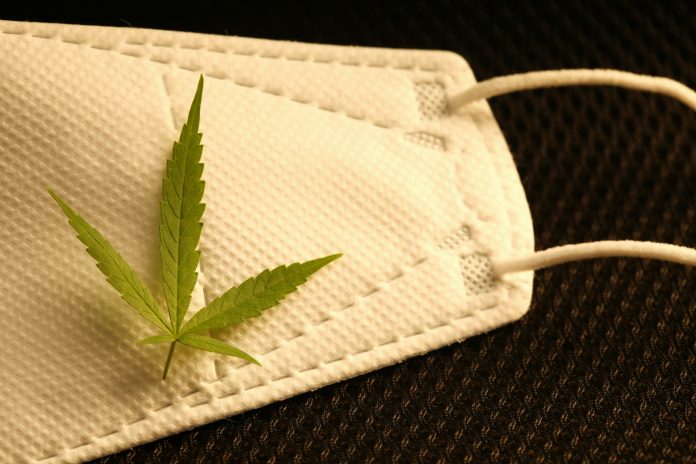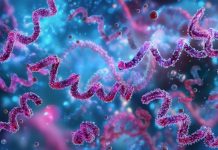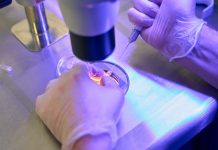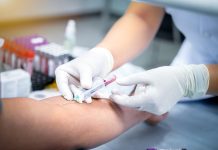In this final article of a series of five, Oxford Cannabinoid Technologies will discuss their expertise on the use of cannabinoids in medicine when it comes to treating COVID-19
Following previous articles in Open Access Government where we discussed the treatment of cancer, pain, psoriasis, rheumatoid arthritis and epilepsy, this final piece focuses on the use of cannabinoids to treat COVID-19.
COVID-19
The coronavirus disease 2019 (COVID-19) is an infectious disease caused by SARS-CoV-2, a novel coronavirus that was first identified in Wuhan, China, in December 2019 (Smith & Mackenzie, 2020). Since then, COVID-19 has spread globally, resulting in an ongoing pandemic. In the UK alone, there were over 275,000 confirmed cases of the disease, resulting in more than 39,000 deaths as of 2nd June 2020. Worldwide, 6.37 million confirmed cases and over 377,000 deaths were reported.
COVID-19 is part of a large family of coronaviruses. Some are relatively harmless, causing only common cold-like symptoms, while others can be more severe, causing diseases such as Severe Acute Respiratory Syndrome (SARS) and Middle East Respiratory Syndrome (MERS) (World Health Organization (WHO), 2020). Following the SARS outbreak in 2002, and MERS in 2012, COVID-19 is the third significant coronavirus outbreak in the last two decades.
Coronaviruses can be transmitted through both direct (droplet and human-to-human transmission) and by indirect contact (airborne contagion and contaminating objects). The most common symptoms associated with COVID-19 include a fever, cough, shortness of breath, fatigue and loss of smell or taste (CDC, 2020). More severe symptoms, which have been associated with adults with the disease, include pneumonia, acute respiratory distress syndrome (ARDS), sepsis and septic shock (Rothan & Byrareddy, 2020) (Huang, Wang, Ren, & Zhao, 2020).
Cannabinoids and COVID-19
The outcome and severity of COVID-19 are associated with excess production of proinflammatory cytokines, known as a cytokine storm (Ye, Wang, & Mao, 2020). In some patients, this leads to acute respiratory distress syndrome (ARDS), and multiple organ failure (Zaim, Ching, Sankaranarayanan, & Harky, 2020). Effectively, suppressing the cytokine storm is a crucial step in preventing the deterioration of patients with COVID-19 infection, and in saving patients’ lives.
Cannabidiol (CBD) has the potential to attenuate the pro-inflammatory response and cytokine storm that is observed in COVID-19 patients.
CBD is a phytocannabinoid derived from the Cannabis sativa. CBD has analgesic, anti-inflammatory, antineoplastic and chemo-preventative properties (W. A, 2008), but no psychoactive activity. CBD has been shown to be effective in reducing inflammation in an animal model of acute lung disease, where CBD reduced the production of pro-inflammatory cytokines in the bronchoalveolar lavage (BAL) fluid in the lungs (Ribeiro, et al., 2015). Suppressing the release of pro-inflammatory cytokines have the potential to be used as a therapeutic treatment for patients with COVID-19.
CBD has multiple mechanisms of action, some of which have been explored when investigating the effects of CBD on lung disease, including models of ARDS, sepsis and acute lung injury. The nuclear factor NF-kB pathway is involved in proinflammatory signalling, where NF-kB activation is widely implicated in inflammatory diseases. NF-KB is a mediator of pro-inflammatory gene induction and modulates the release of pro-inflammatory cytokines (Lawrence, 2009).
The p38 mitogen-activated protein kinase (MAPK) is an intracellular protein that can initiate inflammation (Kumar, Boehm, & Lee, 2003). The activated form of p38-MAPK (phosphorylated p38-MAPK), is upregulated in response to inflammatory and stress stimuli and plays a central role in the production of pro-inflammatory cytokines (Shieven, 2005). Blocking MAPK-p38 signalling reduces activation of pro-inflammatory cytokines and phosphorylation of p38-MAPK. CBD inhibits phosphorylated p38-MAPK, which leads to decreased production of NKkB and AP-1 (both inflammatory transcription factors) resulting in reduced inflammation (Silva, et al., 2019).
MicroRNA (miRNA) are small non-coding RNA that regulate a wide range of genes. Alternations in their expression are associated with immune responses, inflammatory signalling pathways and pathogenesis of lung diseases, such as ARDS and acute lung disease. Mi-146a is a negative regulator of inflammation, leading to the reduction of NF-KB transcriptional activity. However, mi-146a has shown to be upregulated during immune activation through increased NF-KB activity (Taganov, Boldin, Chang, & Baltimore, 2006). In one study, CBD reduced the activity of NF-KB signalling, which downregulated mi-146a expression (Kozela, et al., 2010) and decreased the release of pro-inflammatory cytokines (IL-6 and IL-1β) (Juknat, Gao, Coppola, Vogel, & Kozela, 2019). This provides evidence that CBD has anti-inflammatory effects that are mediated via the NF-KB signalling pathway.
CBD also acts as an antagonist for the G-coupled protein receptor, GRP55 (Ryberg E, et al., 2007). GPR55 signalling can modulate certain pro-inflammatory cytokines The role of GPR55 on the immune response was investigated in an animal model of sepsis. The inhibition of GPR55 using CBD-related antagonists decreased the release of pro-inflammatory cytokines and reduced inflammation (Ahou, Yang, & Lehmann, 2018). GPR55 inhibition may, therefore, be a novel target for attenuating hyper-inflammation in sepsis and a potential target to treat COVID-19.
Current research into CBD and COVID-19
There is one ongoing clinical trial investigating the effects of CBD on COVID-19. The study, currently in proof-of-concept (POC) stage, is investigating the use of CBD in combination with steroids in a small cohort of 10 COVID-19 patients at Rabin Medical Center, Israel (Stero Biotechs, Ltd, 2020).
Within the last 20 years, we have seen three deadly coronaviruses and can expect to see more in the future. Suppressing release of pro-inflammatory cytokines by CBD provides a potentially new therapeutic approach in the treatment of COVID-19. There is limited research into CBD and COVID-19 during this current pandemic, however, there is evidence that demonstrates that CBD can reduce the cytokine storm observed in the severe symptoms of the virus. The limited research to date shows that the use of CBD to treat ARDS caused by COVID-19 and other diseases and infectious agents is a promising avenue that warrants further investigation.
References
Ahou, J., Yang, H., & Lehmann, C. (2018). Inhibition of GPR 55 improves dysregulated immune response in experimental sepsis. . 1-9.
CDC. (2020, April 28). Coronavirus Disease 2019. Retrieved May 28, 2020, from Centers for Disease Control and Prevention: https://www.cdc.gov/coronavirus/2019-ncov/symptoms-testing/symptoms.html
Huang, C., Wang, L., Ren, L., & Zhao, H. (2020). Clinical features of patients infected with 2019 novel coronavirus in Wuhan, China. 395(10223), 497-506.
Juknat, A., Gao, F., Coppola, G., Vogel, Z., & Kozela, E. (2019). miRNA expression profiles and molecular networks in resting and LPS-activated BV-2 microglia—Effect of cannabinoids. 14(2).
Kozela, E., Pietr, M., Juknat, A., Rimmerman, N., Levy, R., & Vogel, Z. (2010). Cannabinoids Δ9-tetrahydrocannabinol and cannabidiol differentially inhibit the lipopolysaccharide-activated NF-κB and interferon-β/STAT proinflammatory pathways in BV-2 microglial cells. 285(3), 1616-26.
Kumar, S., Boehm, J., & Lee, J. (2003). p38 MAP kinases: key signalling molecules as therapeutic targets for inflammatory diseases. 2(9), 716-26.
Lawrence, T. (2009). The Nuclear Factor NF-κB Pathway in Inflammation. 1(6).
Ribeiro, A., Almeida, V. I., Costola-de-Souza, C., Ferraz-de-Paula, V., Pinheiro, M. L., Vitoretti, L. B., . . . Palermo-Neto, J. (2015). Cannabidiol improves lung function and inflammation in mice submitted to LPS-induced acute lung injury. 37(1), 35-41.
Rothan, H., & Byrareddy, S. (2020). The epidemiology and pathogenesis of coronavirus disease (COVID-19) outbreak. 109.
Ryberg E, L. N., Leonova, J., Elebring, T., Nilsson, K., Drmota, T., & Greasley, P. (2007). The orphan receptor GPR55 is a novel cannabinoid receptor. Br J Pharmacol, 152(7), 1092-101.
Shieven, G. (2005). The biology of p38 kinase: a central role in inflammation. 5(10), 921-928.
Silva, R. L., Silveira, G. T., Wanderlei, C. W., Cecilio, N. T., Maganin, A., Franchin, M., . . . Cunha, T. M. (2019). DMH-CBD, a cannabidiol analog with reduced cytotoxicity, inhibits TNF production by targeting NF-kB activity dependent on A2A receptor. 368, 63-71.
Smith, D., & Mackenzie, J. (2020). COVID-19: a novel zoonotic disease caused by a coronavirus from China: what we know and what we don’t.
Stero Biotechs, Ltd. (2020). Stero Biotechs Announce an IP Protected Clinical Trial for COVID-19 Patients Using a CBD-Steroid Treatment. Retrieved from prnewswire: https://www.prnewswire.com/news-releases/stero-biotechs-announce-an-ip-protected-clinical-trial-for-covid-19-patients-using-a-cbd-steroid-treatment-301043465.html
Taganov, K., Boldin, M., Chang, K., & Baltimore, D. (2006). NF-kappaB-dependant induction of microRNA miR-146, an inhibitor to signalling proteins of innate immune responses. 103(33), 12481-6.
- A, Z. (2008). Cannabidiol: from an inactive cannabinoid to a drug with wide spectrum of action. 30(3), 271-280.
World Health Organisation (WHO). (2020, January 14). WHO Statement regarding cluster of pneumonia cases in Wuhan, China 2020. Retrieved May 29, 2020, from https://www.who.int/china/news/detail/09-01-2020-who-statement-regarding-cluster-of-pneumonia-cases-in-wuhan-china
Ye, Q., Wang, B., & Mao, J. (2020). The Pathogenesis and Treatment of the `Cytokine Storm’ in COVID-19. 80(6), 607-613.
Zaim, S., Ching, J., Sankaranarayanan, V., & Harky, A. (2020). COVID-19 and Multi-Organ Response. 100618.
Please note: This is a commercial profile











